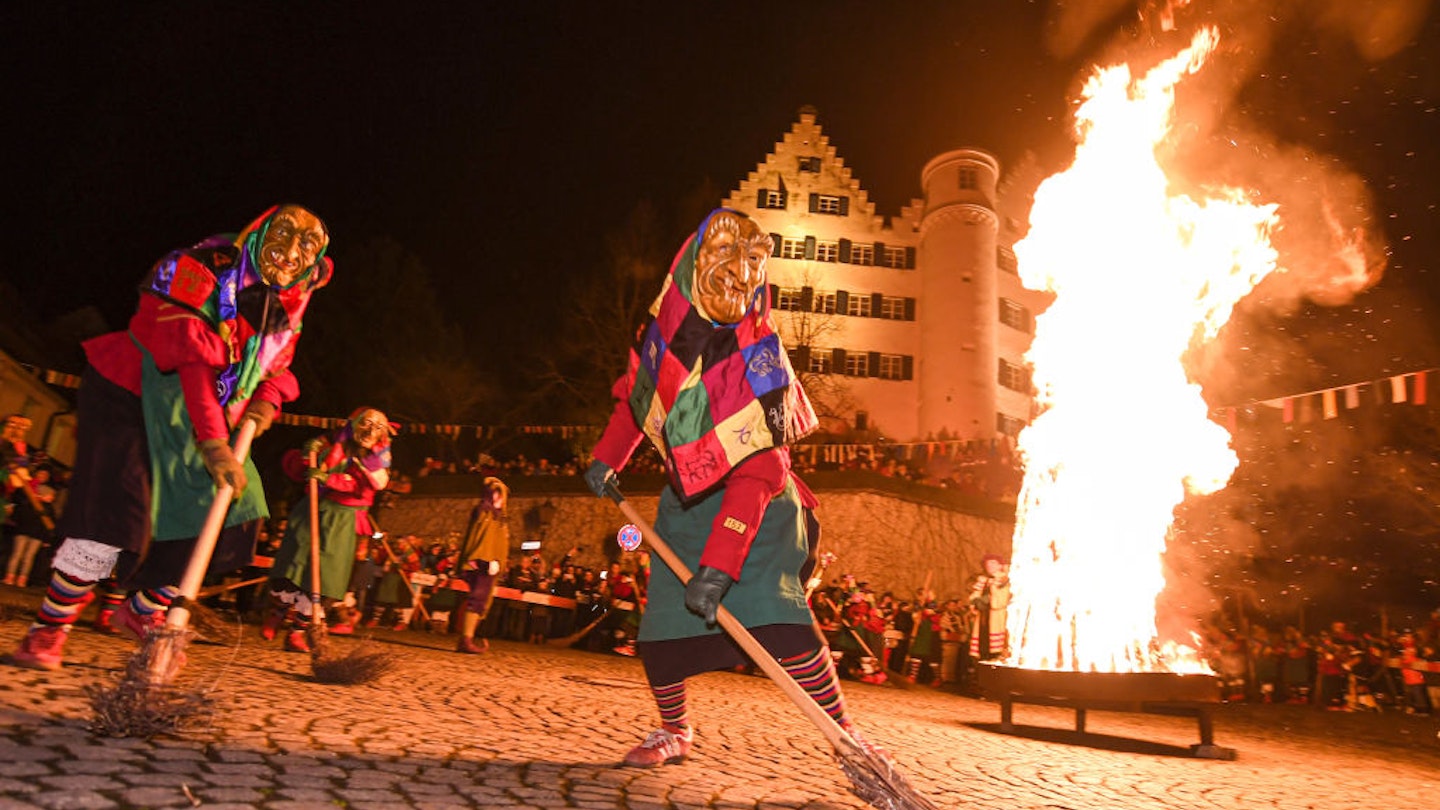Pagan Festivals Around the World
Paganism is experiencing a global revival as more people reconnect with nature. Cities such as New Orleans, Edinburgh, and Drogheda, Ireland, have commercialized their pagan festivals. However, there are still places where one can find ancient celebrations held outside of modernity; where traditions have remained local secrets passed down for generations.
The Burryman Procession, South Queensferry, Scotland
Covered entirely in prickly burdock seedheads and adorned with a crown of flowers, the Burryman and his procession of bagpipe players and bell ringers have walked the streets of South Queensferry every August for over nine hundred years, making this the oldest festival in Scotland. The meaning behind this tradition is somewhat mysterious; the Burryman is thought to represent the Green Man, a pagan nature spirit symbolizing rebirth and fertility, warding off evil.
Only a male born in South Queensferry can become the Burryman, a position considered a great honor. In the weeks leading up to the procession, the chosen man must hand-pick thousands of burrs for his costume, which are then securely fixed onto fabric panels. On the morning of the event, these panels are carefully applied, completely engulfing him in a suit of burrs. Accompanied by assistants who support him on decorated staffs, the Burryman hobbles slowly through the town for nine hours, where onlookers bestow gifts of money and drams of whisky for good luck.
When and Where?
The Burryman Procession occurs on the second Friday of August in South Queensferry, Scotland.
Fêtes de L’Ours (Festival of the Bears), Prats-de-Mollo-la-Preste, France
Symbolic of the enduring struggle between man and nature, the wild tradition of the Fêtes de L’Ours has been celebrated in Pyrenees villages for centuries. It traces its origins back to arctolatry, or bear cult worship, practiced by pre-Christian Basques. In Prats-de-Mollo-la-Preste, which hosts the oldest bear festival, participants reenact the legend of a young shepherdess kidnapped by a lecherous bear. After nine days of howling in anguish, the bear is eventually captured by local woodcutters and a farm boy, thus resolving the conflict.
The festival kicks off at Fort Lagarde with a feast for the men dressed as bears. They are sewn into sheepskin costumes with patches of skin blackened with a mixture of oil and soot. Roaring and racing down the hill, these costumed bears tackle unsuspecting villagers, smearing them with soot before they are finally captured and transformed back into humans.
When and Where?
The Fêtes de L’Ours is celebrated on the second Sunday in February in Prats-de-Mollo-la-Preste, France. Be sure to wear old clothes to avoid getting sooty!
Harvest Home, Whalton, England
Until about a century ago, rural communities throughout the United Kingdom commonly celebrated a bountiful harvest with the Harvest Home ritual. The last corn sheaves would be fashioned into a likeness of a woman, known as the Kern Baby, dressed in an elegant white gown woven with flowers. The community would gather, dance, and enjoy a feast, fostering a sense of unity.
This tradition likely originated in ancient Rome, where farmers honored Ceres, the goddess of agriculture. Today, Whalton is the last stronghold of this custom, hosting a bonfire and the 15ft Kern Baby since 2016.
When and Where?
The Baal Fire and Kern Baby dance are held on July 4 in Whalton, England.
Fasnacht, Kriens, Switzerland
During Lent, Switzerland bursts with masquerades, pageants, and marching bands, marking one last indulgence before fasting begins. Carnival, or Fasnacht, has been celebrated for centuries, with Kriens preserving the masking tradition. Early masks, known as Hübelimasken, have evolved to incorporate both pagan symbolism and caricatures of regional figures.
Fasnacht in Kriens features beloved characters like the gossipy Wöschwyb and the lascivious Bärnerwiib, among others. Traditionally a male-dominated event, today, individuals of all genders participate in this vibrant festival.
When and Where?
Fasnacht is celebrated between Dirty Thursday and Carnival Tuesday, leading up to Ash Wednesday in Kriens, Switzerland.
Gody Zywieckie, Zywiec, Poland
On New Year’s Day in Zywiec, a vibrant parade begins with the arrival of the Grandfathers, or Jukace, dressed in conical hats and sheepskin masks. Heralding the end of winter, this ancient Slavic-pagan masquerade brings good luck as the Jukace jump, dance, and whip crack their way through the streets.
Starting their festivities on New Year’s Eve, the Jukace accept gifts of vodka, sweets, and cash for blessings. Their revelry climaxes with a parade in the city center, symbolizing the chase away of evil spirits and the old year.
When and Where?
Gody Zywieckie is celebrated on New Year’s Eve and New Year’s Day in Zywiec, Poland.





